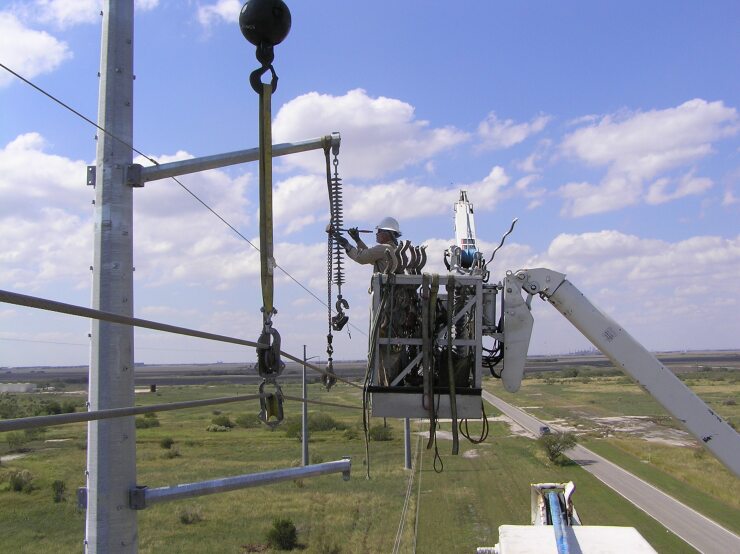Amid record demand for electricity in Texas, the Lower Colorado River Authority is pricing $169.5 million of revenue bonds to fund its growing electric transmission system.
Austin-based LCRA operates one of the largest transmission systems on the main Texas grid. Over the next five years, LCRA Transmission Services Corp. plans to add $1.4 billion to its $2.9 billion of assets, according to company officials.

The bonds to be priced Wednesday through book runner Barclays will take out notes used to finance transmission system work. With final maturity expected in 2049, the bonds carry ratings of A from S&P Global Ratings and A-plus from Fitch Ratings. Outlooks are stable.
The Electric Reliability Council of Texas, or ERCOT, operates the grid that carries most of the state’s electricity.
“The operating cost burden of LCRA's transmission services are considered very low,” said Fitch Ratings analyst Kathryn Masterson. “While transmission costs have increased substantially in ERCOT over the past 10 years as a result of sizable investment across the grid, transmission costs as a percentage of typical residential customer electric bills account for less than 25% of the total bill.”
LCRA TSC owns or operates more than 5,000 miles of transmission lines and substations across 82 counties in Texas. The facilities include leased assets from some of LCRA's wholesale electric customers, to which it makes monthly lease payments.
LCRA, a water and power wholesaler, spun off its transmission services as a nonprofit corporation after a 1999 state law changed how electric utilities manage and operate. The law required utilities to separate electric generation and transmission operations as part of preparations for a deregulated retail electric market. The law also allowed LCRA to expand its transmission facilities and operations beyond its traditional Central Texas service area.
Since its creation, LCRA TSC has invested more than $2.8 billion in transmission projects to meet the growing demand for electricity, improve reliability, connect new generating capacity, address congestion problems that affect the competitive market and help move renewable energy to the market.
LCRA lines carry enough to supply power to about 1.9 million homes when demand for power is highest.
On Aug. 12, demand for electricity on the ERCOT grid hit a record 74,666 megawatts, a spokeswoman said. Last summer tied with 2016 for the hottest on record in the northern hemisphere. ERCOT issued two alerts about potential shortages of power in August and one in September.
With a Texas heat wave continuing through September, ERCOT set a peak demand record for the month on Sept. 3 when demand reached 68,546 MW between 4 and 5 p.m. That is more than 1,500 MW higher than the previous September record set in 2016.
ERCOT forecasts growth of the electric grid with a capacity of 88,389 megawatts by 2023. At the same time, the margin for error between energy production and peak demand is expected to shrink to a historic low of 7.5%.
ERCOT anticipates growth of its wind and solar resources to continue, as developers respond to the combination of the persistent cost decline of these technologies, positive public sentiment to renewable generation, and increasingly stringent environmental standards.
Renewable capacity represents about 89% of the new service queue, with the balance coming from thermal resources, according to Moody’s Investors Service.
ERCOT has focused on planning of the large transmission projects designed primarily to transport wind power from the Competitive Renewable Energy Zones (CREZ) to the major cities.
“As part of the CREZ project, nearly 3,600 miles of 345-kV transmission lines were built to accommodate new wind generation capacity,” Moody’s said. “As of November 2018, high-voltage transmission lines totaled more than 46,500 miles, up from 38,000 miles ten years ago. In 2017, ERCOT endorsed a total of $890 million of transmission projects, up from $653 million in 2016.”
On July 11, LCRA announced it had signed a contract to add 141 megawatts of solar power to its generation portfolio to serve wholesale customers beginning in 2021.
Under the contract, LCRA will purchase renewable energy from a solar plant to be built in Borden County. The solar power will supplement LCRA’s other renewable energy, including 295 MW available from hydroelectric generation at dams along the Highland Lakes and 10 MW from a south Texas solar plant under construction.
“Our wholesale customers told us they were interested in renewable power that also makes sense economically, and we researched numerous options before determining the new Borden County solar plant meets both of those requirements,” said Phil Wilson, LCRA general manager.
Under the agreement, LCRA will acquire just under half the power from the new Juno solar plant in west Texas. The plant is being built by Intersect Power, a developer with approximately 2 gigawatts of contracted late-stage projects in California and Texas and a total pipeline of over 4 GW of solar-powered projects.
According to the Fourth U.S. National Climate Assessment, the annual average temperature for the contiguous 48 states increased by 1.2 degrees Fahrenheit for the period 1986 to 2016 relative to 1901-1960 and is projected to increase over the next several decades.
“This trend has far-reaching consequences, including effects on weather patterns, storm events, wildfires and sea level rise,” Moody’s noted in a Sept. 24 report. “One particular consequence for U.S. local governments is that rising temperatures will increase the frequency and severity of extreme heat days, as well as average temperatures, which threaten to curb agricultural production and labor productivity, increase costs for infrastructure, heighten energy demand and negatively affect public health.”





